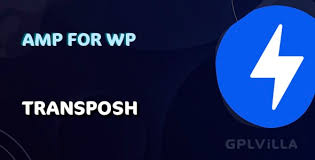s code embeds the Google Translate interface in an AMP page, allowing users to translate content into different languages directly from the page. However, this solution has its limitations, such as the inability to fully customize the translation UI and less control over the translation quality.
3. Server-Side Translation (Dynamic Translation):
For better performance and to remain fully compliant with AMP guidelines, you can opt for server-side translation. This method involves generating translated versions of your content on the server and serving them as separate URLs based on the user's language preference.- WP Multilingual Plugin (WPML) or Polylang: These plugins allow you to create translations for your WordPress content. You can then configure AMP to serve translated content by detecting the user's language preference through the server (without relying on JavaScript).
- With these plugins, you can ensure that when users visit the AMP page, the page is already translated and served to them in their preferred language without needing to rely on client-side translation scripts like Transposh.
4. AMP and WPML or Polylang Integration:
- Both WPML and Polylang support AMP natively and can provide language-specific AMP pages.
- With WPML or Polylang, each language version of the page can be served as an AMP version, allowing users to view content in their preferred language.
5. Creating a Custom AMP Translation Solution:
- For advanced users, creating a custom solution is also an option. This involves detecting the user’s preferred language on the server side and generating an AMP-compliant version of the page in that language.
- This could be done by integrating translation APIs, but the challenge is to ensure that the solution adheres to AMP’s strict rules for performance and compliance.
Summary:
- Transposh cannot be directly integrated with AMP due to AMP’s restrictions on custom JavaScript.
- Workarounds include:
- Using a non-AMP version of the page for translation and linking to it from the AMP page.
- Implementing AMP-compatible translation solutions like Google Translate via AMP iframe or using WPML or Polylang for server-side translation.
- Google Translate or server-side translation methods are viable alternatives that maintain AMP compatibility.
